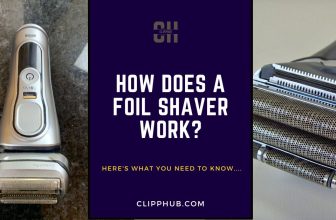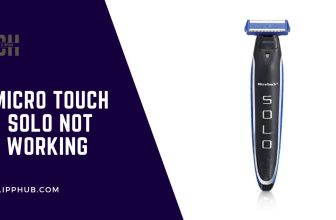
We all like a good shave, it gets us feeling fresh and looking great, but are we secretly killing two birds with one stone and exfoliating too?
If you’re as “Does shaving remove dead skin?” then you’re in the right place for answers.
In this article, we will explore the question of whether shaving effectively removes dead skin and discuss the various factors involved.
But what exactly is “dead skin” and can shaving affect it?
Does shaving remove dead skin
Dead skin cells are a natural part of the skin’s renewal process.
These cells accumulate on the skin’s surface and can contribute to a dull and uneven complexion.
Regular removal of dead skin is essential for maintaining healthy skin.
There are different methods available for dead skin removal, including exfoliation and chemical peels.
We’ll talk about the former.
Does shaving remove dead skin?
The answer leans to no.. shaving can somewhat exfoliate the skin but is not as effective as you think and it only really exfoliates due to a little bit of friction.
If you’re hoping to shave a chunk of hair like beard hair while also exfoliating, you won’t get great results.
To shave” shave” to exfoliate/remove dead skin, it would have to be on light hair and with a specific type of blade.
You also have to take your time with the shave and target the areas needed as shown in the video below:
Shaving primarily removes hair, not dead skin cells: While shaving may remove some dead skin cells, its primary purpose is hair removal.
Dead skin cells may not be effectively targeted or removed by shaving alone.
But.
When shaving, the razor blade can help slough off some dead skin cells along with the hair. This can result in a smoother and brighter complexion.
Shaving has also been known to unclog pores as long as they are shallow.
Dead skin cells can be deeply embedded in the skin’s layers, and shaving may not be sufficient to eliminate them.
If your pores aren’t deep, it can be effective.
Other considerations
It is important to moisturize the skin after shaving to maintain its health and hydration.
Shaving can sometimes cause irritation, razor burn, or other side effects, especially for individuals with sensitive skin – be aware.
Therefore, it is crucial to use appropriate shaving techniques and products to minimize these risks.
Additionally, while shaving can contribute to dead skin removal, it may be beneficial to incorporate other methods such as exfoliating scrubs or chemical exfoliants into your skincare routine.
These methods can provide a more thorough and targeted approach to removing dead skin cells.
Conclusion
In conclusion, while shaving can contribute to dead skin removal to some extent, its primary purpose is hair removal, and it always will be that.
The main work of exfoliating and skin removal works underneath the skin while blades just rest on the surface.
Dead skin cells may not be effectively targeted or eliminated by shaving alone.










